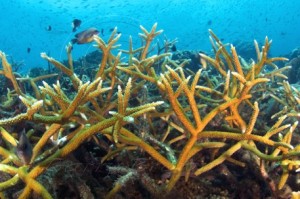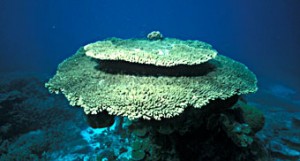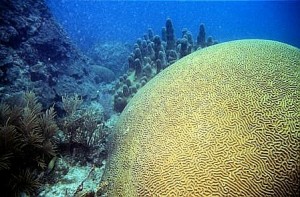The Great Barrier Reef is widely recognised as one of the most important environmental and ecological wonders on the planet. This vast ecosystem is home to thousands of species of marine life, and all of them depend on coral in some way to survive. When visitors to the reef cast their eyes underwater, whether it is via scuba diving, snorkeling, or on a glass bottom boat, the sheer size and scope of the reef is inspiring. The many colours, shapes, and textures of each coral colony attest that these tiny creatures have adapted to make the most out of their environment. One of the most frequently asked questions out at the reef is the name or identity of each coral species, and sometimes, the answers are surprisingly simple. Below, you’ll find a brief guide into a few types of coral so that, when you make your way out to the reef, you can sound like a professional reef naturalist, and know a bit about each type of coral you are seeing.
Branching Corals:

Some of the most iconic species of coral out at the reef are the branching corals, and these can grow 10-20 centimetres per year depending on water conditions. Also some of the most fragile; severe weather events make these structures very susceptible to breakage.
Table Corals:

A favourite of snorkelers and divers, table corals extend underwater like huge solar panels, emphasising their reliance on the zooxanthallae algae to convert sunlight into energy. Also very fragile and quite commonly disturbed during severe weather events.
Massive Corals:

Massive corals (also known as boulder or mound corals) are characteristically ball-or boulder-shaped and relatively slow-growing, usually less than 1 centimeter a year.
